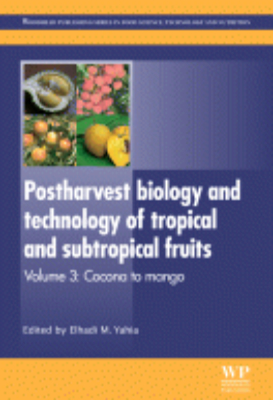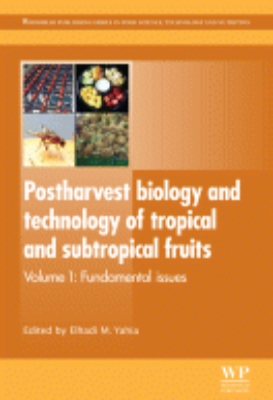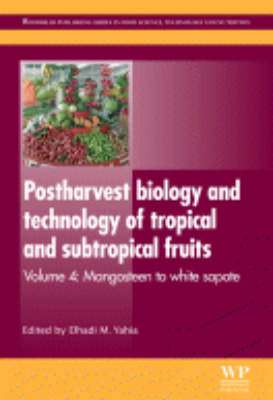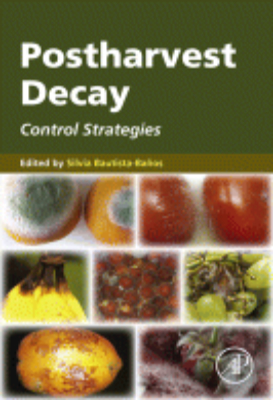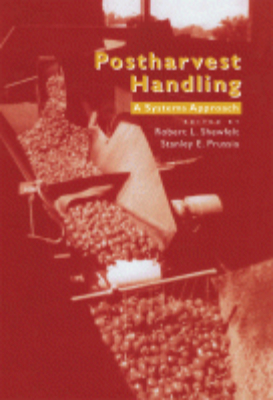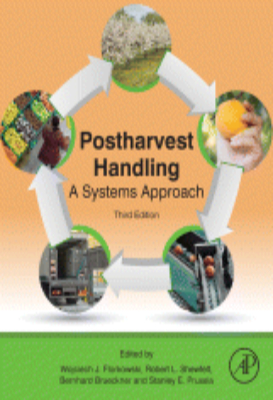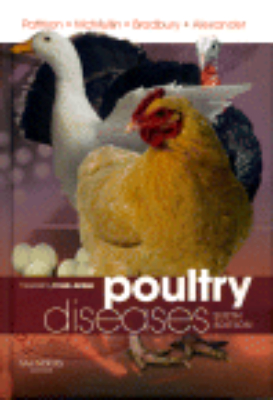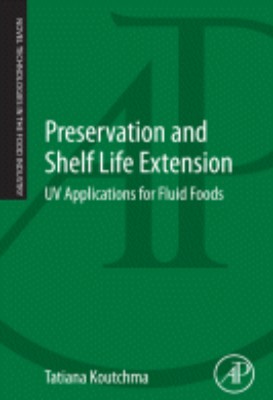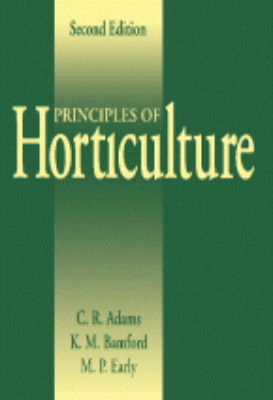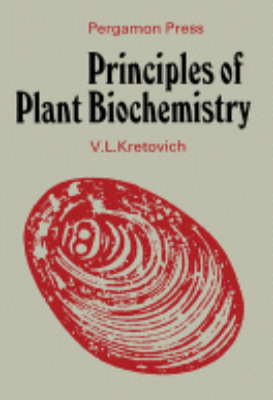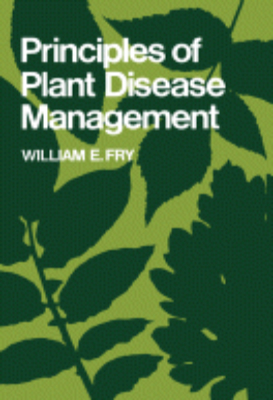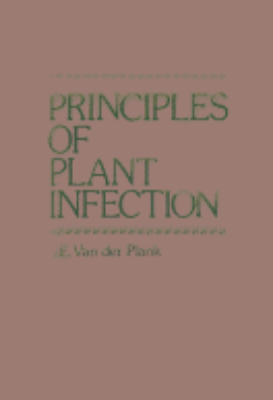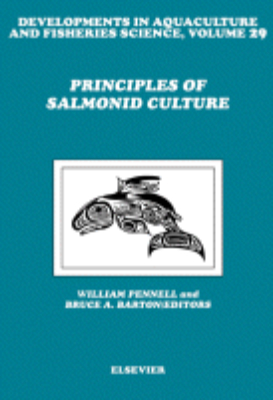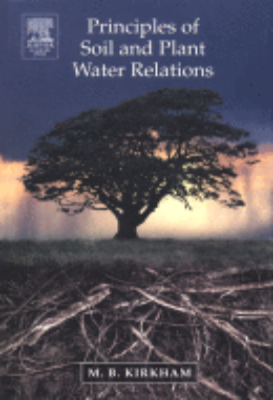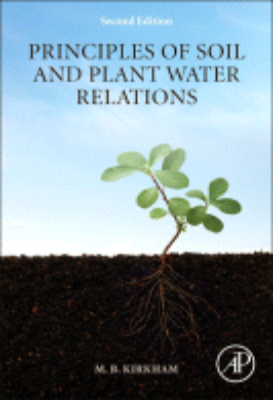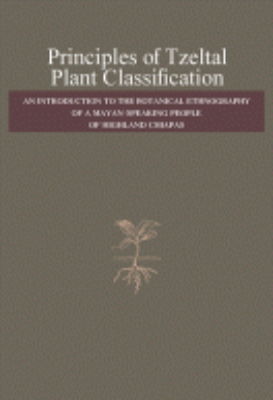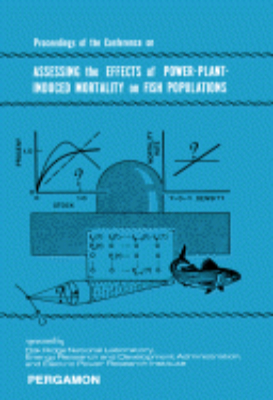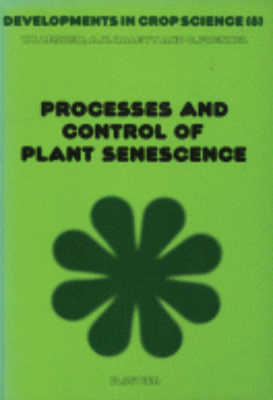ebooks
Postharvest Biology and Technology of Tropical and Subtropical Fruits: 2011 Cocona to Mango
"While products such as bananas, pineapples, kiwifruit and citrus have long been available to consumers in temperate zones, new fruits such as lychee, longan, carambola, and mangosteen are now also entering the market. Confirmation of the health benefits of tropical and subtropical fruit may also promote consumption further. Tropical and subtropical fruits are particularly vulnerable to postharvest losses, and are also transported long distances for sale. Therefore maximising their quality postharvest is essential and there have been many recent advances in this area. Many tropical fruits are processed further into purees, juices and other value-added products, so quality optimization of processed products is also important. The books cover current state-of-the-art and emerging post-harvest and processing technologies. Volume 1 contains chapters on particular production stages and issues, whereas Volumes 2, 3 and 4 contain chapters focused on particular fruit.Chapters in Volume 3 of this important collection review factors affecting the quality of different tropical and subtropical fruits, concentrating on postharvest biology and technology. Important issues relevant to each specific product are discussed, such as postharvest physiology, preharvest factors affecting postharvest quality, quality maintenance postharvest, pests and diseases and value-added processed products, among other topics. Key Features. Along with the other volumes in the collection, Volume 3 is an essential reference for professionals involved in the postharvest handling and processing of tropical and subtropical fruits and for academics and researchers working in the area. Covers current state-of-the-art and emerging post-harvest and processing technologies. Important issues relevant to each particular fruit are discussed, such as postharvest physiology, preharvest factors affecting postharvest quality and pests and diseases"
Postharvest Biology and Technology of Tropical and Subtropical Fruits: 2011 Fundamental Issues
"Tropical and subtropical fruits are popular products, but are often highly perishable and need to be transported long distances for sale. The four volumes of Postharvest biology and technology of tropical fruits review essential aspects of postharvest biology, postharvest technologies, handling and processing technologies for both well-known and lesser-known fruits. Volume 1 contains chapters on general topics and issues, while Volumes 2, 3 and 4 contain chapters focused on individual fruits, organised alphabetically.Volume 1 provides an overview of key factors associated with the postharvest quality of tropical and subtropical fruits. Two introductory chapters cover the economic importance of these crops and their nutritional benefits. Chapters reviewing the postharvest biology of tropical and subtropical fruits and the impact of preharvest conditions, harvest circumstances and postharvest technologies on quality follow. Further authors review microbiological safety, the control of decay and quarantine pests and the role of biotechnology in the improvement of produce of this type. Two chapters on the processing of tropical and subtropical fruit complete the volume.With its distinguished editor and international team of contributors, Volume 1 of Postharvest biology and technology of tropical and subtropical fruits, along with the other volumes in the collection, will be an essential reference both for professionals involved in the postharvest handling and processing of tropical and subtropical fruits and for academics and researchers working in the area. Key Features. Along with the other volumes in the collection, Volume 1 is an essential reference for professionals involved in the postharvest handling and processing of tropical and subtropical fruits and for academics and researchers working in the area. Focuses on fundamental issues of fruit physiology, quality, safety and handling relevant to all those in the tropical and subtropical fruits supply chain. Chapters include nutritional and health benefits, preharvest factors, food safety, and biotechnology and molecular biology"
Postharvest Biology and Technology of Tropical and Subtropical Fruits: 2011 Mangosteen to White Sapote
"While products such as bananas, pineapples, kiwifruit and citrus have long been available to consumers in temperate zones, new fruits such as lychee, longan, carambola, and mangosteen are now also entering the market. Confirmation of the health benefits of tropical and subtropical fruit may also promote consumption further. Tropical and subtropical fruits are particularly vulnerable to postharvest losses, and are also transported long distances for sale. Therefore maximising their quality postharvest is essential and there have been many recent advances in this area. Many tropical fruits are processed further into purees, juices and other value-added products, so quality optimisation of processed products is also important. The books cover current state-of-the-art and emerging post-harvest and processing technologies. Volume 1 contains chapters on particular production stages and issues, whereas Volumes 2, 3 and 4 contain chapters focused on particular fruit. Chapters in Volume 4 review the factors affecting the quality of different tropical and subtropical fruits from mangosteen to white sapote. Important issues relevant to each product are discussed, including means of maintaining quality and minimising losses postharvest, recommended storage and transport conditions and processing methods, among other topics. With its distinguished editor and international team of contributors, Volume 4 of Postharvest biology and technology of tropical and subtropical fruits, along with the other volumes in the collection, are essential references both for professionals involved in the postharvest handling and processing of tropical and subtropical fruits and for academics and researchers working in the area. Key Features. Along with the other volumes in the collection, Volume 4 is an essential reference for professionals involved in the postharvest handling and processing of tropical and subtropical fruits and for academics and researchers working in the area. Reviews factors affecting the quality of different tropical and subtropical fruits, concentrating on postharvest biology and technology. Important issues relevant to each particular fruit are discussed, such as postharvest physiology, preharvest factors affecting postharvest quality and pests and diseases"
Postharvest Decay
"Written by a diverse group of research professionals, Postharvest Decay: Control Strategies is aimed at a wide audience, including researchers involved in the study of postharvest handling of agricultural commodities, and undergraduate and graduate students researching postharvest topics. Growers, managers, and operators working at packinghouses and storage, retail, and wholesale facilities can also benefit from this book. The information in this book covers a wide range of topics related to selected fungi, such as taxonomy, infection processes, economic importance, causes of infection, the influence of pre-harvest agronomic practices and the environment, the effect of handling operations, and the strategic controls for each host-pathogen, including traditional and non-traditional alternatives. Key Features. Includes eleven postharvest fungi causing serious rots in numerous fruits and vegetables. Offers selected microorganisms including pathogens of commercially important tropical, subtropical and temperate crops worldwide, such as tomatoes, pears, apples, peaches, citrus, banana, papaya, and mango, among others. Presents content developed by recognized and experienced high-level scientists, working in the postharvest pathology area worldwide. Provides basic information about each fungus, pre- and postharvest factors that contribute to infection and control measurements, including the use of chemicals and non-traditional methods"
Postharvest Handling: 1993
"Postharvest Handling: A Systems Approach introduces a new concept in the handling of fresh fruits and vegetable. Traditional treatments have been either physiologically based with an emphasis on biological tissue or technologically based with an emphasis on storage and handling. This book integrates all processes from production practices through consumer consumption with an emphasis on understanding market forces and providing fresh product that meets consumer expectations. Postharvest physiologists and technologists across the disciplines of agricultural economics, agricultural engineering, food science and horticulture along with handlers of minially-processed products within the fresh produce fruit and vegetable processing industries will find this to be an invaluable source of information. Key Features
Postharvest Handling: 2014
"Postharvest Handling, Third Edition takes a global perspective in offering a system of measuring, monitoring, and managing produce processing to improve food quality, minimize food waste, reduce risks and uncertainties, and maximize time and resources. This unique resource provides an overview of the postharvest system and its role in the food value chain, and offers essential tools to monitor and control the handling process. It shows how to predict and combat unexpected events (e.g., spoilage), and manage the food quality and safety within a facility. Proven research methods and applications from various viewpoints are available to help you maintain high-quality produce and achieve the highest yields possible. The book also explores current challengesincluding oversupply, waste, food safety, lack of resources, sustainabilityand best practices for production to thrive in spite of these challenges. Key Features. Presents current research methods and applications in temperature control and heat treatments to help minimize moisture content, to prevent spoilage and mold, and more. Addresses challenges of traceability and sustainability. Presents testing and measurement techniques and applications. Provides technological tools to create crop value and improve both food safety and food quality"
Poultry Diseases
Now in its sixth edition, Poultry Diseases is once again fully revised with the addition of vital new material. It remains the standard reference work on health and disease for those involved in the poultry industry, government and veterinary education. Following a familiar structure, readers of the sixth edition gain concise but major reviews on current knowledge of general and disease-specific topics discussed over 45 (5 new) chapters in seven sections. With a large international team of contributors led by an authoritative editor team and a Foreword by Professor Frank Jordan, Poultry Diseases is an invaluable resource for the practicing veterinarian, poultry inspector, agricultural manager or veterinary student.
Power Plant Performance
Power Plant Performance discusses the different procedures and practices involved in the operation of power plants. The book is divided into four parts. Part I covers general considerations such as steam cycles; the sampling, analysis, and assessment of coal; and pumping its related terms, the different types of pumps, and the determination of sizes and efficiency. Part II tackles the important measurements in power plants such as temperature, pressure, and gas and water flow. Part III deals with the operation of power plant components such as the boiler, turbine, and condensers. Part IV tackles other related topics such as steam turbine heat consumption tests; plant-operating parameters; and the costs of outages. The text is recommended for professionals involved in the development, maintenance, and operation of power plants, especially those who would like to be familiar with the basics.
Practical Animal Husbandry
Practical Animal Husbandry presents a contemporary framework of the main subject divisions of animal husbandry. Chapters are devoted to the discussion of handling of animals; the breeding of domestic livestock; the growth and development of animals; reproduction processes such as egg-laying in poultry, milk production in cows, sheep and goats; the right amount and the right quality of food; confinement and shelter for all types of domesticated livestock; and preventive medicine and animal welfare. Husbandsmen, veterinarians, and livestock producers will find the book highly informative.
Practical Biochemistry for Colleges
This book presents a selection of tried and trusted laboratory experiments in the field of biochemistry. The experiments are described in detail and can be used directly or in a modified form. They are grouped according to a broad range of biochemical disciplines which allows those responsible for arranging practical classes to select experiments to complement any given biochemistry course. Suggestions are made for further work in more advanced classes. As well as the practical method the experiments are accompanied by background information, discussion of results, references for further study and illustrations.
Practical Botany
Practical Botany for Advanced Level and Intermediate Students, Fifth Edition is a five-part laboratory manual covering the syllabuses in Botany of the advanced level students and other examinations of similar standard. This laboratory manual must be used in conjunction with textbooks of botany. The Introduction presents general instructions for practical work and for the keeping of practical notebooks and a list of apparatus and instruments required, as well as a summary of the characteristics of living organisms, the differences between plants and animals and the principles of plant classification. Part I describes the features and methods of use of the microscope, while Part II contains intensive discussions on the evaluation of the morphological, cytological, and histological aspects of plants. The remaining parts cover the biochemical, physiological, and genetic aspects of the plant experiments. This book is directed toward advanced and intermediate level botany teachers and students.
Practical Guide to Neurogenetics-key
This simple guide to neurogenetics demystifies the overwhelming amount of information on the subject so you can identify key clinical features and understand your management options. Reach relevant differential diagnoses and provide appropriate counseling to your patients using the symptom-based approach. By integrating genetic and neurological approaches to diagnoses, this book ensures that the neurological consequences of a genetic diagnosis and the genetic consequences of a neurological diagnosis are clear and explicit. Concise and portable, this book is ideal for easy reference in clinical use.
Preservation and Shelf Life Extension
"Preservation and Shelf Life Extension focuses on the basic principles of ultraviolet light technology as applied in low-UV transmittance treatments of food fluids and solid foods. It describes the features of UV light absorption in food fluids and available commercial systems, and provides case studies for UV treatment of fresh juices, dairy products, wines, and beer. The book also includes information on various continuous and pulsed UV sources and processing systems, as well as examples of specific treatments for fruits, vegetables, meat and poultry products. Key Features. Addresses preservation and shelf-life extension of foods and food plant safety improvement. Explores non-thermal and non-chemical alternatives for preservation and shelf-life extension of fluid foods, drinks and beverages, and for solid foods. Written by an internationally recognized expert in ultraviolet light, high hydrostatic pressure processing, and microwave heating"
Principles and Measurements in Environmental Biology
Principles and Measurements in Environmental Biology aims to provide an understanding of some important physical principles and their application in biology. The book also aims to describe how instruments utilizing these principles can be used to measure biological and environmental processes and their interactions. This book covers the effects of the environment on biological organisms; the application of theories of radiation, kinetic theory, gas laws, and diffusion in biology; and water and its properties. The relation of plants with atmosphere near the ground is also discussed. This book also presents sampling techniques; the computation of errors used in the interpretation of data; the use of different devices; and data gathering and its practical applications. This text is for students, researchers, and professionals and experts in biology who wish to understand the mentioned principles in physics, its mathematical aspects, and their applications in the field.
Principles of Animal Research
"Principles of Animal Research is the first publication to offer a broad look at animal research science for a student, early researcher, or technician. Offering guidance for all aspects of the research experience, including the research and development of a thesis, model selection, experimental design, IACUC protocol preparation, and animal husbandry and technical procedural needs, the book is a necessary addition to every student, technician, and researchers education. Key Features. Provides background material for students to understand the broader backdrop against which animal research is undertaken. Includes ethical and regulatory information. Covers commonly used animal models and the process to choose a model for biomedical research"
Principles of Developmental Genetics
Providing expert coverage of all major events in early embryogenesis and the organogenesis of specific systems, and supplemented with representative clinical syndromes, Principles of Developmental Genetics, Second Edition discusses the processes of normal development in embryonic and prenatal animals, including humans. The new edition of this classic work supports clinical researchers developing future therapies with its all-new coverage of systems biology, stem cell biology, new technologies, and clinical disorders. A crystal-clear layout, exceptional full-color design, and bulleted summaries of major takeaways and clinical pathways assist comprehension and readability of the highly complex content.
Principles of Horticulture
Principles of Horticulture, Second Edition covers the various topics concerning plant cultivation for agricultural use. The book is comprised of 17 chapters that tackle the various areas of concerns in horticulture. The coverage of the text includes the nurturing aspects of horticulture, including growth and development, genetics and breeding, and nutrition. The book also covers the various threats and problems encountered by horticulturists, such as pests, weeds, and harmful microorganisms. The text will be of great use to researchers and practitioners of plant-related fields, such as botany, agriculture, and particularly horticulture.
Principles of Plant Biochemistry
Principles of Plant Biochemistry focuses on the methodologies, approaches, and techniques employed in plant biochemistry, including analysis of proteins, carbohydrates, vitamins, and metabolism. The publication first takes a look at proteins and carbohydrates. Discussions focus on general properties and structure of proteins, amino acid composition of proteins and properties of the protein molecule, isolation of proteins and the establishment of their homogeneity, monosaccharides, polysaccharides, and steroids. The text then elaborates on vitamins and secondary plant compounds, including aliphatic organic acids, glycosides, tannins, essential oils and resins, herbicides, antibiotics, and phytonicides. The manuscript examines enzymes and the role of metabolism in living organisms, as well as general properties and classification of enzymes and oxidases. The book then ponders on photosynthesis and chemosynthesis, interconversion of carbohydrates, and fermentation and respiration. The inter-relationship of metabolic processes and amino acid and protein metabolism are also discussed. The publication is a dependable reference for readers interested in plant biochemistry.
Principles of Plant Disease Management
"Principles of Plant Disease Management is intended to provide a substantive treatment of plant disease management for graduate and undergraduate students in which theoretical and practical elements are combined. Reference is made to specific diseases and control practices to illustrate basic principles or strategies. The section on epidemiology includes a chapter in which arthropod vectors (aphids, leafhoppers, whiteflies, Coleoptera and mites) are briefly discussed, and the section on control includes references to the use of crop varieties with resistance to such vectors, and also contains information on mechanical, cultural, biological and chemical measures that contribute to vector control. Key Features. The technology of disease management is presented according to epidemiological principles. Sections on diagnosis, epidemiology, environmental factors, disease forecasting, disease control (exclusion, physical, chemical and biological), plant resistance, cultural modifications to suppress epidemics, effects of chemicals and their major groups and uses, and examples of disease management in practice are included. A bibliography and index are appended"
Principles of Plant Infection
Principles of Plant Infection investigates interactions among pathogens, host plants, the environment, time and space, and their role in plant infection. It describes the principles of infection, particularly of the root, stem, or leaf, as they apply to fungi, bacteria, or viruses. It also highlights the dual nature of resistance and suggests theories of host resistance. Organized into seven chapters, this volume begins with an overview of the relation between the amount of inoculum and the amount of disease it causes. It then turns to a discussion of the disease/inoculum relations of tobacco mosaic virus; how obligate synergism restricts the transmission of pathogens; disease/inoculum relations in root disease; the independent action of spores as inoculum; variable factors other than the amount of inoculum that affect plant disease; and time as a determining factor of the degree of plant infection. The reader is also introduced to endemic disease of plants, the implications of endemicity for plant resistance to disease, the spread of disease via migration of pathogens, and the genetics of host-pathogen interactions. Plant pathologists and plant breeders will gain valuable information from this book.
Principles of Soil and Plant Water Relations: 2005
Principles of Soil and Plant Water Relations combines biology and physics to show how water moves through the soil-plant-atmosphere continuum. This text explores the instrumentation and the methods used to measure the status of water in soil and plants. Principles are clearly presented with the aid of diagrams, anatomical figures, and images of instrumentation. The methods on instrumentation can be used by researchers, consultants, and the military to monitor soil degradation, including measurements of soil compaction, repellency, oxygen diffusion rate, and unsaturated hydraulic conductivity.Intended for graduate students in plant and soil science programs, this book also serves as a useful reference for agronomists, plant ecologists, and agricultural engineers.
Principles of Soil and Plant Water Relations: 2014
Principles of Soil and Plant Water Relations, 2e describes the principles of water relations within soils, followed by the uptake of water and its subsequent movement throughout and from the plant body. This is presented as a progressive series of physical and biological interrelations, even though each topic is treated in detail on its own. The book also describes equipment used to measure water in the soil-plant-atmosphere system. At the end of each chapter is a biography of a scientist whose principles are discussed in the chapter. In addition to new information on the concept of celestial time, this new edition also includes new chapters on methods to determine sap flow in plants dual-probe heat-pulse technique to monitor water in the root zone.
Principles of Tzeltal Plant Classification
Principles of Tzeltal Plant Classification: An Introduction to the Botanical Ethnography of a Mayan-Speaking People of Highland Chiapas covers the underlying classificatory principles used by the Tzeltal to order the vast array of organisms of the plant world. The book describes the setting of the research, both from a botanical and ethnographic view; the general outline of Tzeltal plant classification and nomenclature; and the methods used to collect data. The text also discusses the rich ethnolinguistic terminology used by the Tzeltal in describing and discussing the structure of plants, referred to as ethnophytography; and the cultural significance of plants to the Tzeltal in agriculture, food types, house building, and other areas of material culture where plants and plant products are of major importance. The individual description of all known Tzeltal plant classes is also encompassed in detail. Botanists and ethnobotanists will find the book invaluable.
Problem-Based Feline Medicine
This focused resource covers all medical conditions that affect cats. Using a unique problem-based approach, it provides essential information for assessing presenting symptoms, reaching a differential diagnosis, and selecting the appropriate course of treatment for feline patients. A consistent format makes it easy to find information related to key signs and possible causative factors (graded to indicate how common each is), diagnosis, differential diagnosis (including tests where appropriate), treatment, prognosis, and prevention (where applicable) for each clinical condition.
Problems of the Biochemistry of the Nervous System
Problems of the Biochemistry of the Nervous System is a collection of papers presented at the Second Conference on the Biochemistry of the Nervous System, organized by the Institute of Biochemistry of the Ukrainian Academy of Sciences on February 12-16, 1957. The contributors consider particularly Soviets considerable research works in the field of functional biochemistry and the dynamic aspects of the biochemistry of the central nervous system. This text is organized into 11 parts encompassing 33 chapters, and begins with reviews on proteins and their metabolism in the brain and peripheral nerves; the effect of functional states such as excitation and inhibition upon them; and the changes occurring in their metabolism during growth. The succeeding parts contain articles about phosphorus-containing substances and methods of their investigation. These topics are followed by discussion of the chemical nature of a brain glycogen and its different fractions; carbohydrate metabolism during excitation and inhibition; and the adrenaline metabolism. Other parts tackle the ammonia metabolism, the developmental biochemistry of the brain, and the histochemical approach to study nucleoproteins of the neurons. The remaining parts deal with hypothermia and the cerebral metabolism in some pathological conditions. This book will prove useful to biochemists, biologists, and neurologists.
Production of Biologicals from Animal Cells in Culture
Production of Biologicals from Animal Cells in Culture reviews the state of the art in animal cell biotechnology, with emphasis on the sequence of events that occur when generating a biological from animal cells in culture. Methods that enable adjustment of nutrient feed streams into perfusion bioreactors so as to increase productivity are described. A number of issues are also addressed, such as the usefulness of the fingerprint method for cell characterization. Comprised of 135 chapters, this book begins with an overview of the problems and benefits of animal cell culture, followed by a discussion on the isolation of immortal murine macrophage cell lines. The reader is systematically introduced to the use of DNA fingerprinting to characterize cell banks; immortalization of cells with oncogenes; lipid metabolism of animal cells in culture; and energetics of glutaminolysis. Subsequent chapters explore serum-free and protein-free media; the physiology of animal cells; gene expression in animal cell systems; and animal cell bioreactors. The monitoring and assay of animal cell parameters are also considered, along with downstream processing and regulatory issues. This monograph will be of interest to students, practitioners, and investigators in the fields of microbiology and biotechnology.

